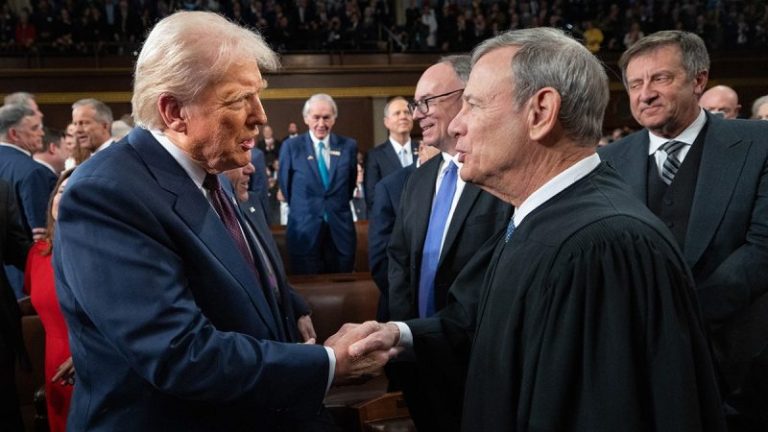The gold price continued to move this week, approaching the US$3,900 per ounce level and setting a fresh all-time high on the back of a US government shutdown.
The closure came after Congress failed to reach an agreement on a spending bill ahead of the new American fiscal year, which began on Wednesday (October 1).
Democrats and Republicans are at odds as Democrats push for changes to the bill, including an extension to billions of dollars in Obamacare subsidies; meanwhile, President Donald Trump has threatened thousands of permanent layoffs, not just temporary furloughs.
This shutdown is the 15th since 1981, and according to Senate Majority Leader John Thune, it could continue on until next week as the two sides negotiate. The longest government shutdown happened between 2018 and 2019, during Trump’s first presidency, and lasted for 35 days.
Part of the reason market watchers see this shutdown as significant is that it will delay the release of the latest nonfarm payrolls report, which was set to come out on Friday (October 3).
Depending on how long the shutdown lasts, September consumer price index data, which is scheduled for publication on October 15, may also not be on time.
The US Federal Reserve is due to meet later this month, from October 28 to 29, and normally would use this and other data to help make its decision on interest rates. The central bank cut rates by 25 basis points at its September meeting, and CME Group’s (NASDAQ:CME) FedWatch tool currently shows strong expectations for another 25 basis point reduction at the next gathering.
Although gold took a breather after nearing US$3,900, it remains historically high, with many market watchers suggesting US$4,000 is in the cards in the near term.
In the longer term, some experts have even loftier expectations — for example, Adam Rozencwajg of Goehring & Rozenwajg sees a path to a five-figure gold price.
‘It’s not going to happen under normal circumstances — it’s not going to happen when everything’s going great. But by the end of this cycle, will we get there? I think we probably will,’ he said.
It’s also worth touching on silver, which pushed past the US$48 per ounce mark this week. Unlike gold, silver has not yet broken its all-time high during this bull run — it’s pushing up against uncharted territory, raising questions about how high it can go this time.
On that note, David Morgan of the Morgan Report shared several factors that would tell him the market is reaching a top. Here’s what he said:
‘You want to look at exchange-traded fund flows like the GDX, GDXJ, SIL and SILJ. At the same time, more important than almost anything is trading volume at the stock level. When mid-tier and smaller producers suddenly trade three, four or five times their normal daily volume, and prices are rising, that isn’t random. That’s retail money coming back into the market, and fund buying and probably institutions.
‘One more layer of confirmation is relative to performance. When the mining sector starts to outperform the S&P 500 (INDEXSP:.INX), which it has, and the Nasdaq (INDEXNASDAQ:.IXIC), which it has, it’s a telltale sign that the generalist money, not just the hard money crowd, is beginning to rotate in.’
Bullet briefing — CEO shakeup at Barrick, Newmont
Barrick Mining (TSX:ABX,NYSE:B) and Newmont (NYSE:NEM,ASX:NEM) both announced major executive changes this week, with the CEOs of both companies departing.
Barrick’s Mark Bristow unexpectedly stepped down from his position on Monday (September 29) after nearly seven years at the helm of the firn. His exit, which was effective immediately, comes after big changes at the firm, including a shift toward copper and an asset divestment program designed to hone the company’s focus on tier-one assets.
It also follows persistent issues in Mali, where Barrick lost control of its gold-mining complex and had 3 metric tons of the yellow metal seized by the government.
According to Reuters, Bristow’s handling of that ongoing situation was the final straw that prompted the company’s board to push for a change in leadership.
Newmont announced the retirement of Tom Palmer the same day. He had held the position since 2019, and will be succeeded by the company’s president and COO. Analysts note that Newmont had been signaling that a succession plan was in the works.
Similar to Barrick, the company has been in the midst of an extensive program geared at streamlining its portfolio. Newmont acquired Newcrest Mining in 2023, and in February 2024 announced a program to sell non-core assets. It completed the program in April of this year, but has continued to make portfolio adjustments, and to pursue other cost-saving measures.
Market watchers note that despite efforts to boost efficiency, Barrick and Newmont have both failed to match the performance of their peers during today’s bull market.
Year-on-year share price performance of major gold miners.
Chart via Google Finance.
With gold-mining companies conscious of not repeating missteps made during the precious metal’s last runup, investors will no doubt be keen to see how they perform under new management.
Securities Disclosure: I, Charlotte McLeod, hold no direct investment interest in any company mentioned in this article.


